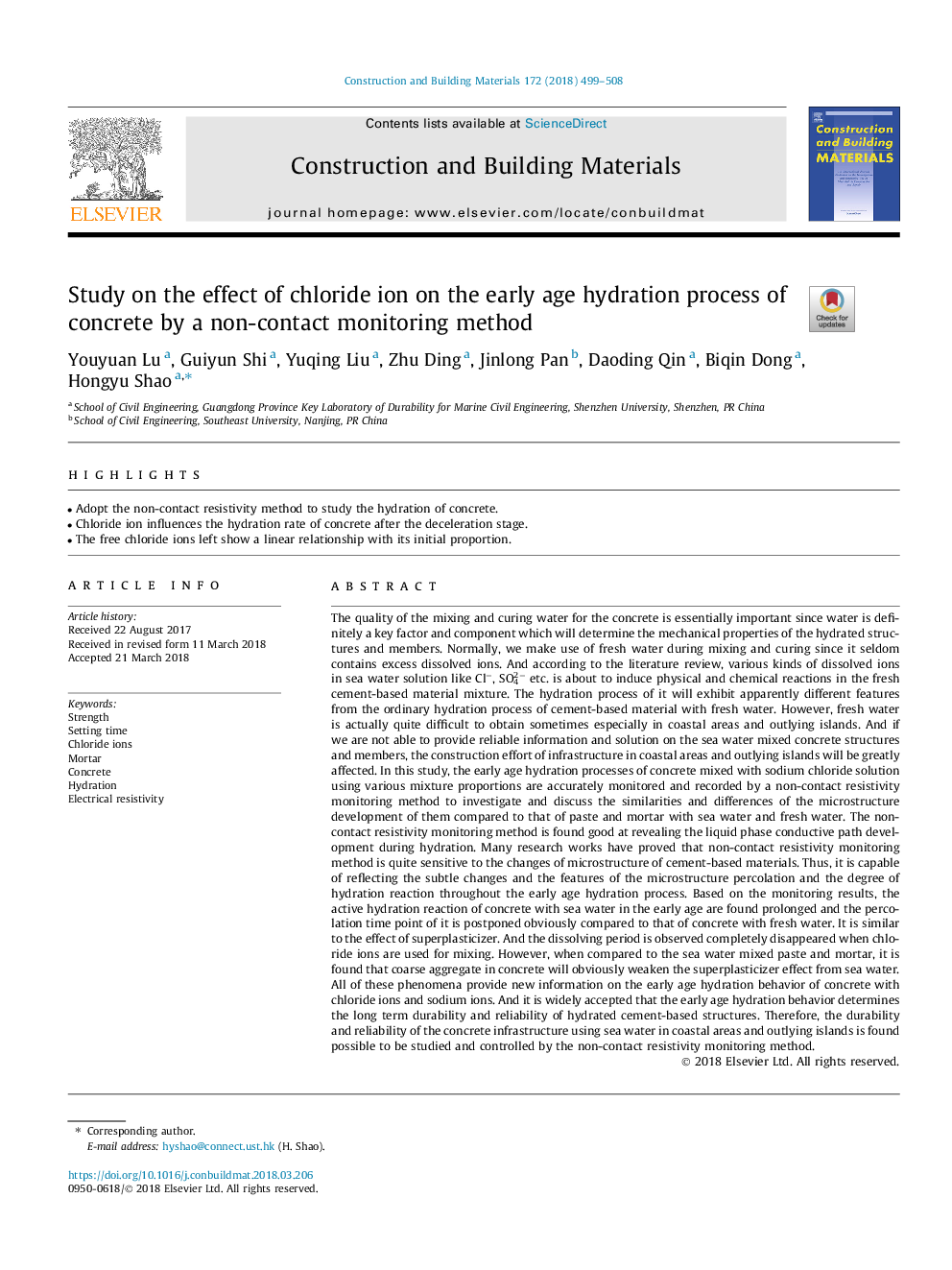| Article ID | Journal | Published Year | Pages | File Type |
|---|---|---|---|---|
| 6713934 | Construction and Building Materials | 2018 | 10 Pages |
Abstract
The quality of the mixing and curing water for the concrete is essentially important since water is definitely a key factor and component which will determine the mechanical properties of the hydrated structures and members. Normally, we make use of fresh water during mixing and curing since it seldom contains excess dissolved ions. And according to the literature review, various kinds of dissolved ions in sea water solution like Clâ, SO42â etc. is about to induce physical and chemical reactions in the fresh cement-based material mixture. The hydration process of it will exhibit apparently different features from the ordinary hydration process of cement-based material with fresh water. However, fresh water is actually quite difficult to obtain sometimes especially in coastal areas and outlying islands. And if we are not able to provide reliable information and solution on the sea water mixed concrete structures and members, the construction effort of infrastructure in coastal areas and outlying islands will be greatly affected. In this study, the early age hydration processes of concrete mixed with sodium chloride solution using various mixture proportions are accurately monitored and recorded by a non-contact resistivity monitoring method to investigate and discuss the similarities and differences of the microstructure development of them compared to that of paste and mortar with sea water and fresh water. The non-contact resistivity monitoring method is found good at revealing the liquid phase conductive path development during hydration. Many research works have proved that non-contact resistivity monitoring method is quite sensitive to the changes of microstructure of cement-based materials. Thus, it is capable of reflecting the subtle changes and the features of the microstructure percolation and the degree of hydration reaction throughout the early age hydration process. Based on the monitoring results, the active hydration reaction of concrete with sea water in the early age are found prolonged and the percolation time point of it is postponed obviously compared to that of concrete with fresh water. It is similar to the effect of superplasticizer. And the dissolving period is observed completely disappeared when chloride ions are used for mixing. However, when compared to the sea water mixed paste and mortar, it is found that coarse aggregate in concrete will obviously weaken the superplasticizer effect from sea water. All of these phenomena provide new information on the early age hydration behavior of concrete with chloride ions and sodium ions. And it is widely accepted that the early age hydration behavior determines the long term durability and reliability of hydrated cement-based structures. Therefore, the durability and reliability of the concrete infrastructure using sea water in coastal areas and outlying islands is found possible to be studied and controlled by the non-contact resistivity monitoring method.
Related Topics
Physical Sciences and Engineering
Engineering
Civil and Structural Engineering
Authors
Youyuan Lu, Guiyun Shi, Yuqing Liu, Zhu Ding, Jinlong Pan, Daoding Qin, Biqin Dong, Hongyu Shao,
